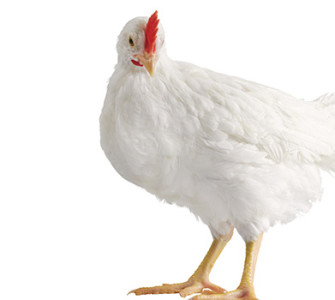Lameness in poultry can start in the hatchery
Lameness in poultry is often associated with bird weight, bacterial infections or the condition of the litter, but it actually begins much earlier in the bird’s life — often in the hatchery.
The main failure in the bone is not only related to mineralization or even damage of the bone structure. It can happen on the collagen, from embryo development through the first days of life, Edgar Oviedo, DVM, a poultry specialist focusing on broiler management at North Carolina State University Extension, told Poultry Health Today.
Oviedo, who has researched poultry lameness for more than 20 years, says reducing the temperature during the last phase of incubation and in the hatchery can make a big difference.
“If you reduce the overheating that these birds normally have, they will have better development — not only on the bones but in all the tissues,” Oviedo said. He added that reducing heat will lead to birds with better immunity, which also contributes to a lower incidence of leg problems.
Weight is less a factor
One might think weight would impact lameness, but Oviedo noted lowering incubation temperature could help reduce incidence of lameness, regardless of a bird’s final weight. While other factors can come into play, Oviedo said, “the beneficial effects of good incubation remain for the rest of the [bird’s] life. Even when we were raising smaller birds…they used to have [lameness] problems.”
There will likely always be challenges because of how fast the birds grow, along with complications associated with managing large flocks. From the egg to the processing plant, the birds go through different conditions, but Oviedo feels lowering the temperature during the last phase of incubation and in the hatchery is a good place to start.
It’s thought that nutritional imbalances can lead to lameness problems, but Oviedo doesn’t think nutrition is a primary cause.
“When the number of birds affected is less than 1% or 0.5%, it’s very hard to believe [nutrition is a factor],” he said. “And when 100% of the flock is receiving the same diet, it’s very difficult to prove that you can cause this small incidence of lameness with nutrition.”
Disease management is important too
More than 50% of broiler chickens raised in the US are now raised without antibiotics. This trend could create additional lameness challenges for growers, Oviedo said. Lameness is not related to one specific bone, he explained; it’s actually the skeletal structure of the animal that can become imbalanced when exposed to bacteria.
“The animal has to create balance through modifications of the gait,” he said. “Those modifications create friction…which can open the door to any bacteria that could be circulating.”
In a healthy flock, Oviedo said bacteria can translocate to the bloodstream or tissues, where they would normally be eliminated by an immunological response. However, bacteria can create their own areas of growth in neurological tissue, he explained.
“Bacteria can infiltrate the femoral area or the acetabulum, or it can go to a vertebra. And then we have all these other diseases that can become infectious,” Oviedo said.
Litter can also impact the birds’ ability to walk. If it is too hard, or too wet, it will affect how they balance their weight, which affects their gait, he explained. If antibiotics aren’t used, “the whole environment will be more contaminated, and the amount of bacteria that they have to deal with in the immunological system is higher,” Oviedo said.
It’s a complex issue
Lameness is a problem that has existed for a long time, and it likely won’t go away soon. Furthermore, it’s a complex issue — one that involves disease management, animal welfare and dealing with challenges associated with raising birds without antibiotics.
“Many times, the art of the poultry grower is watching the details,” Oviedo said. It takes close observation, along with common sense, to identify problems and their solutions. And sometimes that means going back to the beginning of a bird’s life.
Posted on February 27, 2019
















